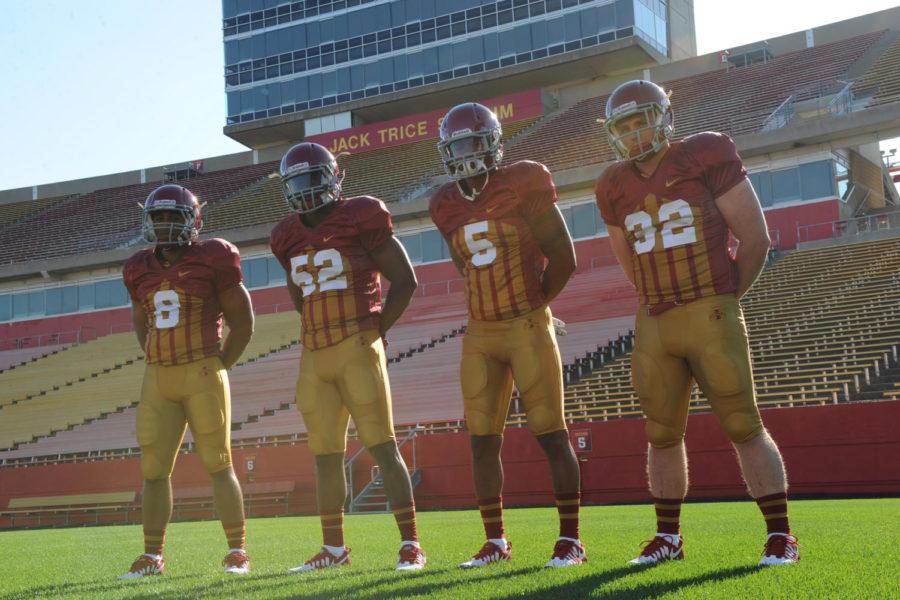Editorial: Throwback uniforms commemorate ISU history
August 8, 2013
As a school founded in 1858, Iowa State is not lacking in history. Like all history, some of Iowa State’s past is commendable, while some parts are not. For better or worse, it is our school’s history that has molded it into a university of which we are all proud.
As the countdown to the 2013 football season begins, the history of ISU athletics is prominent in the minds of many students and alumni.
Recently, the Iowa State football team announced that it would wear throwback uniforms for the game against the University of Iowa on Sept. 14. The jerseys feature vertical gold stripes reminiscent of the uniforms worn by Jack Trice and his teammates in the 1920s.
Upon the announcement, a flurry of responses was seen on various social media platforms. Most reactions were positive, but here and there a complaint can be found. Though some may not like the aesthetic look of the jerseys, which feature a mustard-like shade of gold not seen on Iowa State uniforms for many decades, appearance is not the key point.
Though of course we want our players to look dauntingly cool in the game against rival Iowa, the uniforms are primarily to memorialize the history of the game at Iowa State, and to remember the stadium’s namesake: Jack Trice.
Jack Trice Stadium, home of ISU’s football team, is perhaps the most history-laden location of Iowa State’s athletic program. As most students know, the stadium was named after football player Jack Trice, Iowa State’s first African American athlete, who played a sorry total of one real football game in his 1923 career. Currently, Jack Trice Stadium is the only Division I football stadium named after an African-American athlete.
On Oct. 6, 1923, Trice played in the football game against University of Minnesota. After breaking his collarbone in the first quarter, Trice insisted that he was still fit to play, until he was further injured by Minnesota players in the third quarter. Following the game, he was falsely declared to be fit to travel by a Minneapolis Hospital doctor. Trice died two days later from the injuries sustained from the game.
Though Trice’s story is well-known in the Ames community, it’s still necessary to dust it off and display it occasionally. Though tragic, Trice’s death shows how far we as a university and as a nation have come from when an African American athlete was trampled by his bigoted opposition.
The throwback uniforms commemorate not only Trice and his story but the hope for progress that he now symbolizes. Gone are the days when black athletes were greeted with violence and outrage, but that doesn’t mean the fight against racial prejudice is over. Trice’s story may seem antiquated but the message stays permanently relevant.
Players will wear the throwback uniforms proudly in mid-September and as a community supportive of our university, fans should be equally proud.
Before covering yourself in cardinal and gold body paint or tipping back a can of beer for the Sept. 14 tailgate, think for a minute on the lengthy pride of ISU football and the bittersweet legacy of Jack Trice.

















